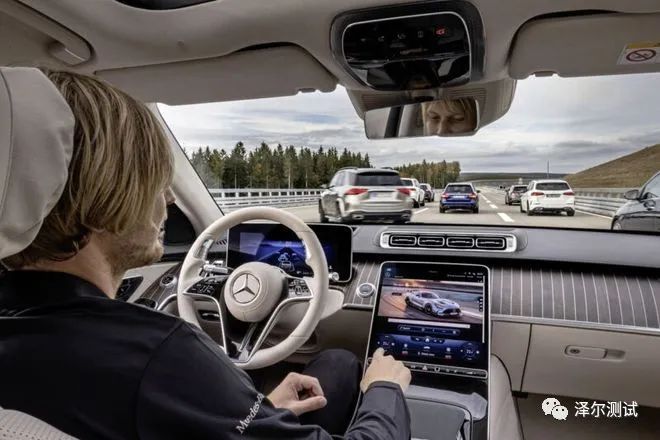On December 11, according to foreign media reports, Germany's auto regulator has approved the autonomous driving system of Daimler's luxury car brand Mercedes-Benz, making it the world's first so-called L3 level approved by the regulator. system, higher than the L2 level of Tesla Autopilot.
The system, called Drive Pilot, is expected to debut on the new Mercedes-Benz S-Class and EQS sedans in 2022, allowing the car to travel at 60km/h on traffic-congested highways. Approval in Germany will pave the way for the company to start offering the Drive Pilot system internationally, and similar moves are likely in other EU countries, as well as South Korea, Japan, Australia and the UK.
The highly automated driving system allows drivers to focus on other activities at certain times, Mercedes-Benz said in a statement. For example, in the event of a traffic jam on certain sections of the highway, the driver can hand over driving responsibility to the vehicle.
Drive Pilot can adjust the information based on vehicle speed and distance to keep the vehicle in its lane. Routes, obstacles and road signs are all recorded and considered. According to Mercedes, the system can also react to unexpected situations, such as evasive maneuvers or braking maneuvers.

Mercedes-Benz has offered different levels of driver assistance systems in the past, combining adaptive cruise control (which regulates the vehicle's speed) and lane keep assist (which tracks lane markings and uses the car's steering to center it between lane markings) ). But according to the definition of SAE International, these systems are only L2 level systems. This means that while the car can accelerate, brake and steer on its own, a human driver still needs to be ready to take over.
Mercedes-Benz Drive Pilot is a true self-driving system, not a driver assistance system. It combines radar, cameras, lidar, microphones (to detect emergency vehicles) and humidity sensors, plus the car's high-precision GNSS to locate the car on a high-definition map.
Once activated, Drive Pilot will take over control of the car. The system can handle unexpected traffic situations and take evasive action if necessary. Unlike GM's Super Cruise (which is still level 2), drivers can really turn their minds and eyes to something else.
However, compared to GM's Super Cruise, the controls in the area of its operational design are tighter. Drive Pilot can only operate on pre-mapped, geo-fenced, closed highways and has a top speed limit of 60 kilometers per hour.
Germany has allowed the use of such L3-level automation systems since 2017. According to Mercedes-Benz, more than 13,100 kilometers of motorways in Germany are suitable for the Drive Pilot system.
KBA approves the Drive Pilot system with a top speed of 60 km/h. The agency has yet to decide whether to allow such systems to increase speeds to 130 km/h, or install lane-changing assistants that can help autonomously overtake.
The German Motor Vehicle Authority (KBA) approved the system according to the technical requirements set out in the UN regulations. Richard Damm, chairman of the KBA, said: "This is an important first step towards autonomous driving, and the KBA is developing national, European and international road safety standards for autonomous driving."
In addition to United Nations regulations on the technical requirements for self-driving cars, countries must pass legislation clarifying where and how these systems are used, and clarifying liability issues.
Daimler Chief Technology Officer Markus Schaefer said: "We are the first company to develop a highly automated driving system in Germany. Having reached this milestone, we have once again demonstrated that we are in the field of autonomous driving. 's pioneering work also ushered in a radical paradigm shift."
Schaefer added that Mercedes-Benz will offer the Drive Pilot system in those markets once legislation is in place in China and the United States. The German approval means Mercedes-Benz can offer the Mercedes-Benz S-Class with Drive Pilot to German customers in the first half of 2022.